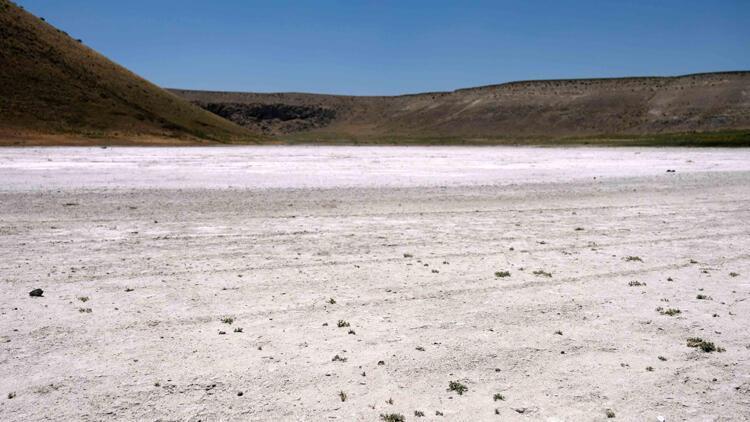
Lake Meke in the Central Anatolian province of Konya’s Karapınar district has completely dried up due to years of low rainfall and wrong agricultural irrigation practices.
The volcanic lake, also known as the “evil eye talisman” for its rarity and its resemblance to the Turkish evil eye from above, once had a depth of 12 meters, but gradually dried up due to drought and unregulated usage of the underground waters that feed the lake.
“The lake used to be visited frequently by local and foreign tourists. It was a very beautiful tourism area 15 years ago,” said Musa Ceyhan, a local and 26-year volunteer representative of the Turkish Foundation for Combating Soil Erosion (TEMA).
Noting that the water of the lake is drawn as groundwater decreases, Ceyhan stressed that climate change is an important factor in the extinction of the lake.

As the weather gets warmer with the arrival of spring, the lake’s water level gradually decreases. The remaining puddles in the unique crater lakebed, with a giant volcanic cone in its middle, had turned crimson red in April because of microorganisms.
Ceyhan said the people of the region would also swim in the lake. He also asked the authorities for help to restore the lake.
Lake Meke was initially formed as a volcanic crater filled with groundwater following an eruption that is believed to have occurred five million years ago.
The volcano erupted a second time in the middle of the lake 9,000 years ago, giving it its present appearance.
The volcanic cone stands 50 meters high in the middle of the lake. Lake Meke was declared a first-grade protected area in 1989 and was registered as a natural monument in 1998.
The lake, located almost 1,000 meters above sea level, is considered a protected area under the Ramsar Convention on Wetlands.
A Ramsar site is a wetland site designated to be of international importance under the Ramsar Convention signed in 1971.